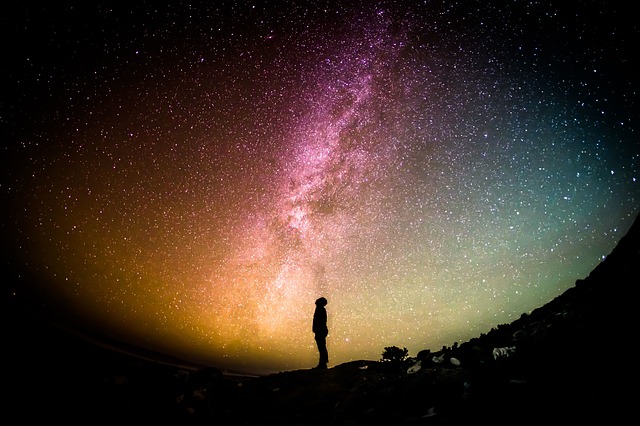The Cygnus constellation is deemed among the most exciting regions of the night sky because of its numerous deep-sky objects. Cygnus has a swan star pattern that is easily identifiable even for amateur astronomers. It is found in the Northern Hemisphere, where it flies in the Milky Way through a crowded area of stars. Cygnus constellation has six bright stars that seem to form a cross, with the brightest being Deneb.
Where is the Cygnus Constellation Located?
Cygnus is among the easiest constellations to identify. It is visible in the Northern Hemisphere from June to December and in the winter months in the Southern hemisphere.
Those in and around the Northern Hemisphere can see Cygnus in the northeastern sky at about 10 pm. It gets directly above the head at 2 am and stays that way until dawn. It is visible during December and January starting at 6 pm and gradually disappears before 10 pm.
In the Southern Hemisphere, you can see the constellation from 9-10 pm in the northeastern sky and moves westwards throughout the night. You can easily see it in July and August. Constellation Cygnus goes high into the sky during the summer months from mid-northern latitudes. This makes it easy to spot as there are no obstructions such as buildings or trees. You can get on top of a building for better viewing.
Cygnus Mythology
There are several myths surrounding the Cygnus constellation. One talks of two gods who were good friends, racing chariots in space. They enjoyed the race so much to the point of not paying attention to where they were heading. They found themselves close to the sun, which melted their chariots. The two gods fell towards the Earth. One was lucky and fell through trees, while the other fell in the river and fell unconscious.
The lucky friend wanted to save his friend but had no swimming skills. So, he requested Zeus to transform him into a swan to get inside the river and rescue his friend. Zeus granted his request and turned him into a swan. He dove into the river and saved his friend. His bravery moved Zeus, and when he died, Zeus placed the swan in the sky to act as a reminder of friendship and courage.
Another legend is by the Chinese known as the magpie bridge. It opines that Zhi Nu and Niu Lang are deeply in love, but the Goddess of Heaven does not allow them to be together. The reason is that Niu Lang is a mortal, whereas Zhi Nu is a fairy.
The lovers could not bear to be apart from each other and decided to marry secretly. The Goddess is not amused, and to demonstrate her disapproval, she places a river up in the sky to separate the two. This river is the Milky Way, our galaxy.
But, the lovers are rejoined every year by magpies who come together to create a massive bridge across the river. This magpie bridge is the Cygnus constellation.
Cygnus Brightest Stars
The Cygnus constellation has three bright stars, Deneb, Sadr, and Albireo, usually referred to as the Summer Triangle.
Deneb
This is the brightest start inside Cygnus, with a magnitude of 1.25. If you are new to the astronomy world, the brightest star has the lowest magnitude and vice versa. Deneb is a bluish-white supergiant, and it sits approximately 2500 light-years from Earth. Compared to the sun, Deneb has a diameter 200 times greater and 200,000 times brighter than the sun.
Sadr
Sadr is the second brightest Cygnus star. It is approximately 1500-2000 light-years from Earth with a magnitude of 2.23. It is full of solid H II gas and several notable deep sky emission nebulae. Sadr has a radius 150 times bigger than the sun, and it is bright yellow-white.
Albireo
This star is also known as Beta Cygni; it exists within the Cygnus constellation as a binary star system. It lies 380 light-years from Earth, and it acts as the swan’s head within the Cygnus constellation. Albireo is among the stars that create the asterism Northern Cross. The star is not as bright as the others, but astronomers love it because it reveals two stars close together when viewed through a small telescope.
Deep Sky Objects within Cygnus Constellation
Cygnus has several deep-sky objects, from emission nebulae to supernova remnants. The constellation has many nebulous regions, including the Sadr region, which entails the Butterfly Nebula. Cygnus has two Messier objects, Messier 29 and Messier 39, and many Sharpless Catalog, IC, and NGC objects. Messier 29 is an open star with about 50 stars. Messier 39 is also an open star with over 30 stars. You can easily see M29 and M39 using a pair of binoculars.
Conclusion
The Sadr region is an excellent example of the amount of hydrogen emission gas is available in the Cygnus constellation. Gamma Cygni, as it is also referred to, sits in the Northern Cross intersection. Additionally, the stunning and equally bright North America Nebula lies in the Northern Cross-region alongside Deneb, Cygnus’ brightest star. Remember to take out your telescope and view the Cygnus constellation during December-January in the Northern Hemisphere and July-August in the Southern Hemisphere.




